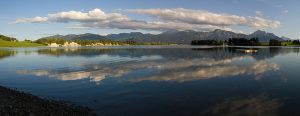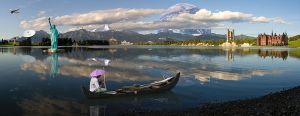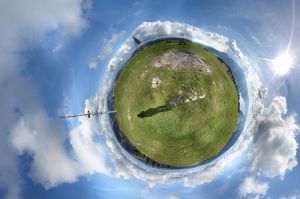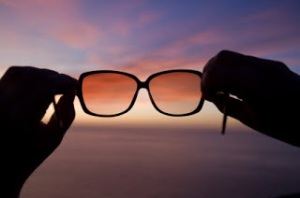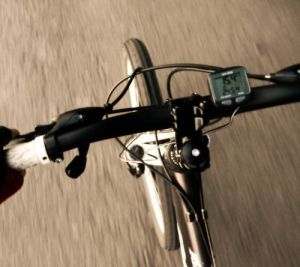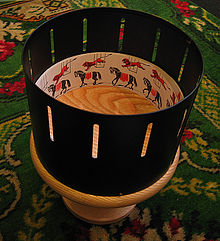DREAMS…
Where do dreams originate from? …
‘So we may superficially explain a dream merely by saying we dreamt it because of something which happened during the day; but there is usually some deeper reason why that incident or experience is chosen out of all others of the day as the subject of the dream. For in itself the incident may be of little importance, a passing reference in the paper, but to the dreamer it recalled something which has significance for him personally.’ (Hadfield, 1954, p.21)
‘The function and purpose of the dream is therefore, according to Frued, to relieve that tension by gratifying the wish, and so allow the individual to sleep.’ (Hadfield, 1954, p.22)
What do dreams look like and why do they look like the way they do? …
It is hard to explain what a dream looks like as every individuals dream looks different in many ways – I believe no one has dreams that look the same. However, from my personal point of view my dreams seem to be unclear. If you try to imagine something, you can, buy you can only focus on certain details at a time, and the full picture never shows up. It isn’t blurry, just not fully put together. Plus, it is vague since my thinking is usually small and irrational.
However, based on the research that I have gathered I have studied in depth of the typical conventions of a dream…
HYPNAGOGIC IMAGERY…The Visual-Spatial Side of Dream Formation…
‘Only a minority of subjects seem to have hypnagogic experiences typically, a point further emphasized by their occurence in a physiological “twilight” setting that mixes normally seperate features of sleep and wakefulness.’ (Hunt, 1989, p.181)
‘Subjects describe diffuse lights and colour.’ ‘Entire landscapes may possess qualities of unusual grandeur and beauty, as in some archetypal dreams. Especially common among the images of isolated objects are bloated or distorted faces, often quite horrifying.’ (Hunt, 1989, p.182)
‘Sensations of floating, falling, flying, or spinning are also common to hypnagogic sleep onset.’ (Hunt, 1989, p.182)
DREAM DIARY…
What is a Dream Diary?…
A dream diary is a journal in which dream experiences are recorded. A dream diary might include a record of nightly dreams, personal reflections and waking dream experiences. It is often used in the study of dreams and psychology. They are also regarded as a useful catalyst for remembering dreams.
PHOTOMONTAGE…
Photomontage is the process and result of making a composite photography by cutting and joining a number of other photographs.
1.
http://en.wikipedia.org/wiki/File:Forggensee_Panorama_SK_0001.jpg
2.
http://en.wikipedia.org/wiki/File:Photomontage_(Forggensee_Panorama)_-2.jpg
Example of a photomontage image…
1. Original background image
2. Photomontage of sixteen photos which have been digitally manipulated in Photoshop to give the impression that it is a real landscape.
Here are two images which show the before and after process of the technique photomontage. I will be applying this technique of montaging the dream images into the clouds/sky within my work to get practicing for my final piece images.
PANORAMIC PHOTOGRAPHY…
A panoramic photograph also commonly known as a panorama is a picture or series of pictures representing a continuous scene, often exhibited a part at a time by being unrolled and passed before the spectator.
Here is my very own example of a panoramic image taken within my second year at University in which Cabot Circus is the theme…
This panoramic image was taken as part of an essay at Cabot Circus, Bristol. I am aware that this is not a 360 degree turn image, however the fact that I integrated the small images together shows the technique montage. In this case I will take images using the technique 360 degree turn and merge them together into a panoramic photograph.
1.
http://en.wikipedia.org/wiki/File:Very_Large_Telescope_Ready_for_Action.jpg
2.
http://en.wikipedia.org/wiki/File:Campnoupano2011.jpg
3.
http://en.wikipedia.org/wiki/File:Campnoupano2011.jpg
4.
http://fr.wikipedia.org/wiki/Fichier:Dent_de_Vaulion_-_360_degree_panorama.jpg
Examples of 360 degree panoramic images…
1. 360 degree panoramic projection of the VLT survey telescope image taken from Wikipedia
2. Lichtenstein 360 degree panorama
3. Camp Nou Stadium, Barcelona in January 2011 panorama image
4. Fichier: Dent de Vaulion 360 degree panorama
Here are four basic 360 degree panorama images. I will apply the same layout when developing my ideas however the last image (4.) is quite challenging but I will try my very best to experiment with.
FIRST PERSON POINT OF VIEW IMAGES…
A first person point of view is when the person narrating is telling their own story.
http://www.allposters.co.uk/-sp/First-Person-View-from-a-Moving-Motorcycle-Posters_i4024196_.htm
http://thewritersvibe.blogspot.co.uk/2010/09/exploring-point-of-view.html
This technique of a first person point of view image would be quite challenging and fun in which I will defintely experiment with. This technique allows the audiences to see the point of view (including opinions, thoughts, and feelings) only of the narrator in which I will be the main character, therefore I will also be the narrator.
ZOETROPE (WHEEL OF LIFE)…
A Zoetrope is a device that produces the illusion of motion from a rapid succession of static pictures. The zoetrope consists of a cylinder with slits cut vertically in the sides. On the inner surface of the cylinder is a band with images from a set of sequenced pictures. As the cylinder spins, the user looks through the slits at the pictures across. The scanning of the slits keeps the pictures from simply blurring together, and the user sees a rapid succession of images, producing the illusion of motion.
Invented: 1834, England, William Horner
A modern example of a Zoetrope…
This could be one of many techniques to use for my piece as it is different to any other techniques that I have used and it would be rather interesting to experiment with. However, although this is a clever technique to use I believe it would not be suitable to develop ideas with or even use for my final piece because it only consists of a 360 degree.
TODOROV’S NARRATIVE THEORY…
I am aware that this mainly applies to films, however images can tell stories too and as mentioned before briefly within my project proposal I will be constructing a narrative through the dream shots based on my dreams. I have researched Todorov’s narrative theory and believe that I will keep in mind of how the narrative will be set out by using his theory. He believed/suggested that stories begin with an equilibrium or status quo where any potentially opposing forces are in balance – this is disrupted by some event, setting in chain a series of events – problems are solved so that order can be restored to the world of fiction.
I will figure out a narrative based on each of my six dreams and will link it to Todorov’s narrative theory.
